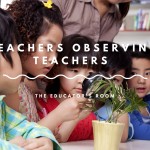Helping students to overcome reading obstacles can be tricky at any age, but it is especially challenging with high school students. Older students find it more difficult to get caught up to their peers. They must deal with feelings of shame, inadequacy, and anger. The teachers who oversee these students’ reading intervention already have a daunting task ahead of them. Therefore, choosing the right high school reading intervention program is of utmost importance.
Elementary teachers can point you in the right direction when it comes to programs for younger students. Many of these same companies have developed programs for older kids, as well. However, you must look beyond what the packaging says and how successful a company is with grade school students before buying. If you are in a position to select a program for your struggling high schoolers, please consider the following tips:
1. Look for high-interest, low-ability material
Using texts one would find in a second grade classroom in a high school classroom is the fastest way to disengage your older students. It does not matter if your students are reading on a second grade level; they do not want to see Freckle Juice, Winnie the Pooh, or The Boxcar Children in their curriculum. Most of your students remember these books from grade school, so if they see them again at the high school level, they will feel offended. “Wow, Miss Teacher must think I’m really stupid to throw this baby book at me.” Some will take it personally. “I must be pretty dumb if I’m in this class.” Since most of your struggling readers already feel inferior, you must do everything you can to avoid making them feel worse.
Instead, you must engage your older class with age-level appropriate topics that are written on their reading level. These topics include the lives of other teenagers (both fiction and nonfiction), zombies, vampires, fast cars, mysteries, survival skills, and sports to name a few. You can also find several young adult fiction novels to supplement your program, such as books by Walter Dean Myers and April Henry. Some of the reading programs provide the novels for you, too. Peruse the material yourself and ask if it would capture the interest of your audience. If you are not sure, please ask a teenager to help you, or grab a high school English teacher (assuming you are not one yourself).
2. Offer incentives that are age-appropriate
High school students who are on the brink of giving up need motivation. Whether you are creating your own or the program comes with one, make sure that the incentives are age-appropriate. Some high school students might get excited about stickers and cute avatars, but most are not. If you can afford it, high school students like to be bribed with food or gift cards, especially to places that serve fast-food or gas, or to popular online retailers. More inexpensive options include watching movies or bringing in games. Like with all incentives, they should be offered at milestone events. Smaller rewards to get you through the semester include giving homework passes, listening to students’ playlists (just be careful here), or offering a little bit of free time.
3. Seek useful data from the programs
Your reading intervention program should provide certain data. For example, it should test students’ reading levels, at least at the beginning and end of the program. Others offer mid-way testing. It should also provide reports about each student’s time spent on-task, as well as the student’s progress in certain reading areas. These areas include vocabulary, spelling, fluency, and comprehension. Better reading programs help teachers assign students in reading groups and choose books based on each student’s interests.
4. Ensure that the program is compatible with existing technology
Almost all reading programs require technology. You need to know whether or not your school’s existing computers, tablets, smart phones, etc. are compatible with the program’s software. If it isn’t, figure out how much it will cost to bring the necessary components up to date. Finally, you must know how many computers (or other electronic devices) you will need for the program. Sometimes, these programs require extra items like headphones.
Hopefully these tips help you cater to your older students’ needs. After teaching reading intervention for the past five years, I know what it is like to use both a fitting and a flawed program with secondary students. Reading intervention at the high school level is already a tough job; your reading program should make it easier, not harder.





